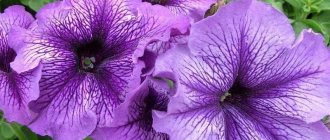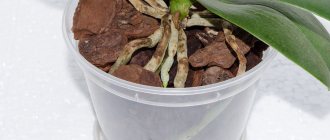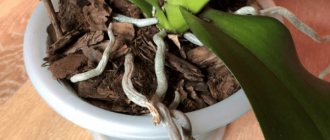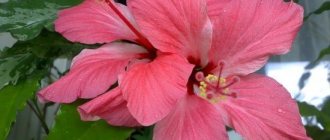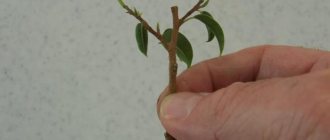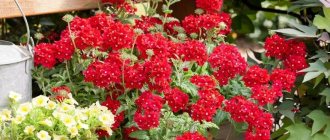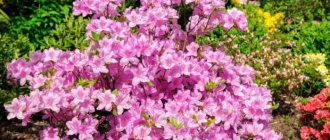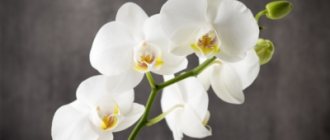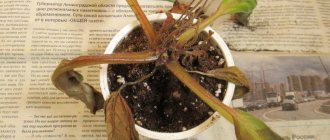WonderWoman
8474 0 0
WonderWoman September 16, 2016You can talk at length about canons in design, but every day the existing canons are becoming less and less stable. Aesthetics and harmony, balance, colors, materials brought together in order to obtain such a long-awaited result are the essence of your knowledge, practice and self-development. My motto is to learn, see, touch something new every day, and I am sure that this is the only way to stay on the right course in “high design.”
Nasturtium is a plant that was brought to us from Central America. Today the culture has become so popular that it is actively used in park design, decorating balconies and loggias, and simply as a green favorite “warming up” on the windowsill. So, nasturtium on the balcony: choice of variety, rules of cultivation and care - the topic of my small botanical opus.
Multi-colored gramophone flowers, when properly cared for, line an entire carpet
The nasturtium genus has about 40 species that belong to the categories of annual and perennial herbaceous or semi-shrub plants. The stems are fleshy and juicy, branched, erect, climbing or creeping, reaching up to 2.5 m in length.
Nasturtium is easily recognized by its round, shield-shaped leaves with a solid edge, bright green in color with a slight waxy coating. The flowers are velvety single, located on long peduncles.
They have a pleasant, light aroma. The color palette includes shades of red, orange, yellow. The period of active flowering is from mid-spring until the first frost.
Variety "Orange Ray"
The breeding of new varieties does not stop for a second: today nasturtium is represented not only by giant shrubs with tentacled lashes, but also by compact species with a height of only 15 cm. The leaves of the plant have also undergone changes; classic green, reddish and variegated colors are available.
I recommend using climbing varieties for vertical gardening; creeping varieties look great in boxes; companions are often selected for dwarf varieties.
In the photo is the “Empress of India” variety, which will certainly appeal to lovers of scarlet color
Decorating balconies
The flower is distinguished by a huge variety of varieties, sizes and shapes, so choosing the most suitable decor for your loggia is quite easy. There are both low-growing and tall, and creeping varieties that can be placed in pots of various sizes, placed on a support, creating a curtain around the balcony, or hung outside in special boxes. The variety of warm shades allows you, if desired, to create a flower arrangement only from nasturtiums.
Why does nasturtium turn yellow in a pot on the balcony?
There are many different pests and diseases that lead to the death and suffering of the plant. But the most common type is rust. It is accompanied by yellowing of the foliage. First, rare yellowish areas appear, which subsequently acquire a rich brown tint, gradually burning through the leaves, forming holes. This happens due to improper watering. Before planting in a permanent pot, you need to make a drainage system to remove excess moisture. Many people forget about this, and water lingers in the pot, which leads to disease. To eliminate diseases, you need to remove all leaves with yellow spots, and also review your watering system in accordance with the rules.
Rules for planting and care
Growing nasturtium on a balcony requires compliance with a number of conditions. Despite the fact that the plant is considered not too demanding, you need to remember that:
- Nasturtium is light-loving ; it cannot be planted on northern, gray-western and north-eastern balconies. The ideal place for it is if the balcony faces south, southeast or southwest;
- The soil in the pot should not be too dense ; a universal soil will do;
- It is necessary to water as the soil dries , avoiding either waterlogging or drying out of the soil;
- Replanting is a great stress for the flower and a high risk of damage to the root system; it should be done as rarely as possible;
- Nasturtium does not tolerate frost well ; it needs to be put in a warm room for the winter.
There are also plants that are more demanding of different conditions, so nasturtium is considered the least capricious of them.
Growing nasturtium using seeds
To propagate this beautiful flowering plant, the seed method is used. There is also a vegetative propagation method. It is especially justified when propagating terry varieties of nasturtium.
The seeds of this representative of the flora can germinate for 4 years after collection.
Photo of nasturtium seeds
Advice!
To increase the chances of germination, the seeds are subjected to the following procedure: the grain is placed in hot water (about +50C) for 20 minutes, then transferred to a container with cold water and left in it for 1 day.
To obtain new nasturtium bushes, two seed methods can be used:
seedlings and non-seedlings.
Caring for container nasturtiums
The flower can be grown in open ground at a summer cottage or in a front garden, but other types of this plant - the so-called container varieties - will take root on the balcony.
Neighbours
Nasturtium can be combined with other plants - varieties of geranium, sage, petunia and rosemary. Bluish, blue and purple flowers perfectly highlight the warm shades of nasturtium.
If a climbing form of flower grows on the balcony, you can combine it with blue or blue morning glory or garden chamomile. All these plants have similar environmental requirements , but with sufficient watering and fertilizing they do not compete with each other.
Lighting and temperature
The flower is extremely light-loving - it needs to be planted on the sunny side, if this is not possible, arrange additional lighting. The plant is demanding in terms of temperature - you need to plant nasturtium on the balcony when the frosts have completely passed.
The soil
Nasturtium is not picky about soil. The only thing worth considering is that it should be quite loose. Dense soils - loams, salt marshes and others - cannot be used or must be mixed with sand. It is best to buy a universal primer for flowers.
Watering
The nasturtium on the balcony (photo can be seen online) is watered daily as the soil dries out. If the soil has good hygroscopicity and retains moisture for a long time, you can reduce the number of waterings. The plant should be sprayed in the evening after sunset.
Top dressing
You should buy fertilizers with a high nitrogen content. They need to be given to plants every week until flowering. After the flowers appear, you need to feed the plant half as often. Excess feeding can reduce the number of flowers during rapid growth of greenery.
Features of care
To make the plant look beautiful, it is necessary to remove excess shoots and give it the desired shape. During flowering, it is better to remove faded buds from the nasturtium - then the flowers will appear more abundantly.
Possible problems and diseases
Various diseases destroy the plant within a short time. Gray rot appears through gray-brown spots on all parts of the plant. The cause is botrys fungus. If you spray it with one percent Bordeaux mixture during the growing season, you can predict this disaster.
Bacteria cause the lower leaves to wither, and then the entire plant may die.
The mosaic of Nasturtium is that the plant tends to slow down the growth of shoots; light green stains appear on Nasturtium.
The mosaic virus is transmitted by sucking pests. It is possible and necessary to fight them. It is also recommended to prevent this problem.
There is another problem - rust. First of all, small brown spots appear, then they grow in the form of irregularly shaped pads.
Return to content
Types and varieties
There are about 90 different varieties of indoor nasturtium. Below are the most popular among them.
Large nasturtium
Large nasturtium is a large, tall plant, most often climbing. Flowers are red, orange, yellow, cream, cherry. Always large and bright. This plant perfectly hides excess sunlight, creating pleasant partial shade.
Small nasturtium
This is a delicate and beautiful plant. The flowers are distinguished by yellow, cream or pink delicate colors. The plant rarely rises high, but does not require support. Ideally combined with other plants - geraniums, sage and rosemary.
Nasturtium canary
It is distinguished by the bright yellow color of the flowers and their unusual shape. Growing Canarian nasturtium is easy in much the same way as other plant varieties. This flower definitely needs support - the Canary nasturtium climbs.
Nasturtium shieldbearing
This is an annual plant - it lives only one season, and is distinguished by very beautiful delicate cream or blue large flowers. High temperature is especially important for this variety.
Popular types of nasturtium
As already noted, 25 species have been used in culture, but most often we encounter four species:
- Nasturtium is large - the stems can be erect, 25-70 cm high, or creeping, up to 2.5 m long. She has large, bright, fragrant flowers, which, replacing each other, decorate our balconies until the first frost.
Large nasturtium
- Small nasturtium grows to a maximum of 35 cm, often does not exceed 15, has small leaves on very long petioles and yellow flowers with dark spots up to 3 cm in diameter.
- Canarian or foreign nasturtium is a real vine up to 3.5 m long; it definitely needs support. It grows well and over the course of a season can entwine the entire balcony with its numerous shoots. It blooms with small yellow flowers with green spurs and ruffled petals.
Small nasturtium
Canarian or foreign nasturtium
- Shield nasturtium is a subshrub with recumbent fragile shoots up to 4 m long and dark green shield-shaped leaves. The flowers are bright, dark red.
Nasturtium shieldbearing
Most varieties and hybrids with double, semi-double flowers in a wide variety of shades of yellow, orange or red are obtained by crossing shield-bearing nasturtium and large nasturtium.
It will be useful to read:
Secrets of growing ampelous petunia Brought to Europe in the 18th century from South America, petunia immediately won the hearts of flower growers. Then the active...
Technology of growing seedlings
Seedlings are not necessary for growing on a balcony, but they are very important if you plan to plant the plant in the ground on a garden plot.
Seedling method
For seedlings, it is necessary to soak nasturtium seeds until small shoots appear from them. Seed packets usually indicate planting dates - as a rule, this is February-April. After the seeds germinate, they are planted in a special container, preferably in peat pots. Seedlings need temperatures above 25˚ during the day and room temperature at night. To ensure optimal conditions, it is best to use a small greenhouse made from a plastic bottle with holes.
Landing at a permanent place
The plant should be planted in a permanent location in May - June, when there is no risk of frost. If the balcony is well protected from bad weather, then you can do this earlier.
Seedless method
Growing from seeds is called seedless cultivation. For planting on a balcony, this is the most acceptable method - nasturtium does not tolerate transplantation well.
The seeds need to be soaked in water for a day or two at room temperature. After this, plant the seeds directly into the pots. This needs to be done in mid-May. You can grow a plant without seedlings only if the balcony is sufficiently insulated so as not to be afraid of frost.
When nasturtium blooms on the balcony
Nasturtium - the flowering of which can be controlled independently. Of course, flowers will not appear in cold winter, but you can still influence them. To do this, you need to control the level of watering and fertilizer. Some home craftsmen are even able to change the shades of leaves and petals using various soil additives.
Nasturtium blooms on its own from about June to August, but if the weather is warm, the flowers persist into September. And if you want to control flowering, you need to use these tips:
- Water deeply in May to help flowering begin faster. When the buds open, you need to stop abundant watering;
- Add ash to make the petals darker;
- Water with water from the rice so that the petals have an even shade throughout;
- Add a little dry egg shells so that the flowering is stronger, the flowers do not wilt quickly, as usual, they last longer.
Perennial varieties in winter greenhouse or warm balcony
Even perennial varieties of nasturtiums do not tolerate winter, frost and low temperatures. They are usually moved indoors for the winter. If the balcony is warm enough (the temperature does not drop below +7˚), you can leave this flower over the winter.
You can also organize a greenhouse and grow flowers there.
Attention! You should not leave nasturtiums on the balcony for the winter.
Preserving a flower for the winter
The capuchin is not able to survive the harsh winters of mid-latitudes. Here it is grown only as an annual plant. On an insulated balcony or in a greenhouse you can extend the life of a flowering plant.
In the fall, some housewives bring pots of nasturtium home. Even before November, the bushes delight with their bright bells.
It’s worth trying to have this wonderful flower on your balcony. The collected seeds have good germination. All summer the plant pleases with its brightness, variety of colors, and lace foliage. In addition, nasturtium produces a very pleasant smell.
Pest and disease control
Some pests, such as whiteflies, aphids, and cabbageweeds, do not tolerate nasturtium. Therefore, it can be used to protect other plantings from these insects.
Before planting nasturtium, you need to know that the most common diseases that threaten the flower are gray mold, bacterial wilt, mosaic virus and rust. If there is a suspicion of attack, first of all you need to remove damaged leaves . It is also good to treat them with special antibiotics and antiviral agents for plants.
Nasturtium: medicine, lunch, cosmetics
Here's a colorful salad of nasturtium, basil and cheese
Nasturtium is valuable not only for its appearance and ability to decorate a balcony. Its infusion is recommended for bronchitis, exhaustion and anemia, and the essential oil will help with vascular diseases.
The leaves and flowers, rich in vitamin C, are used in salads, and the pickled seeds taste like capers.
